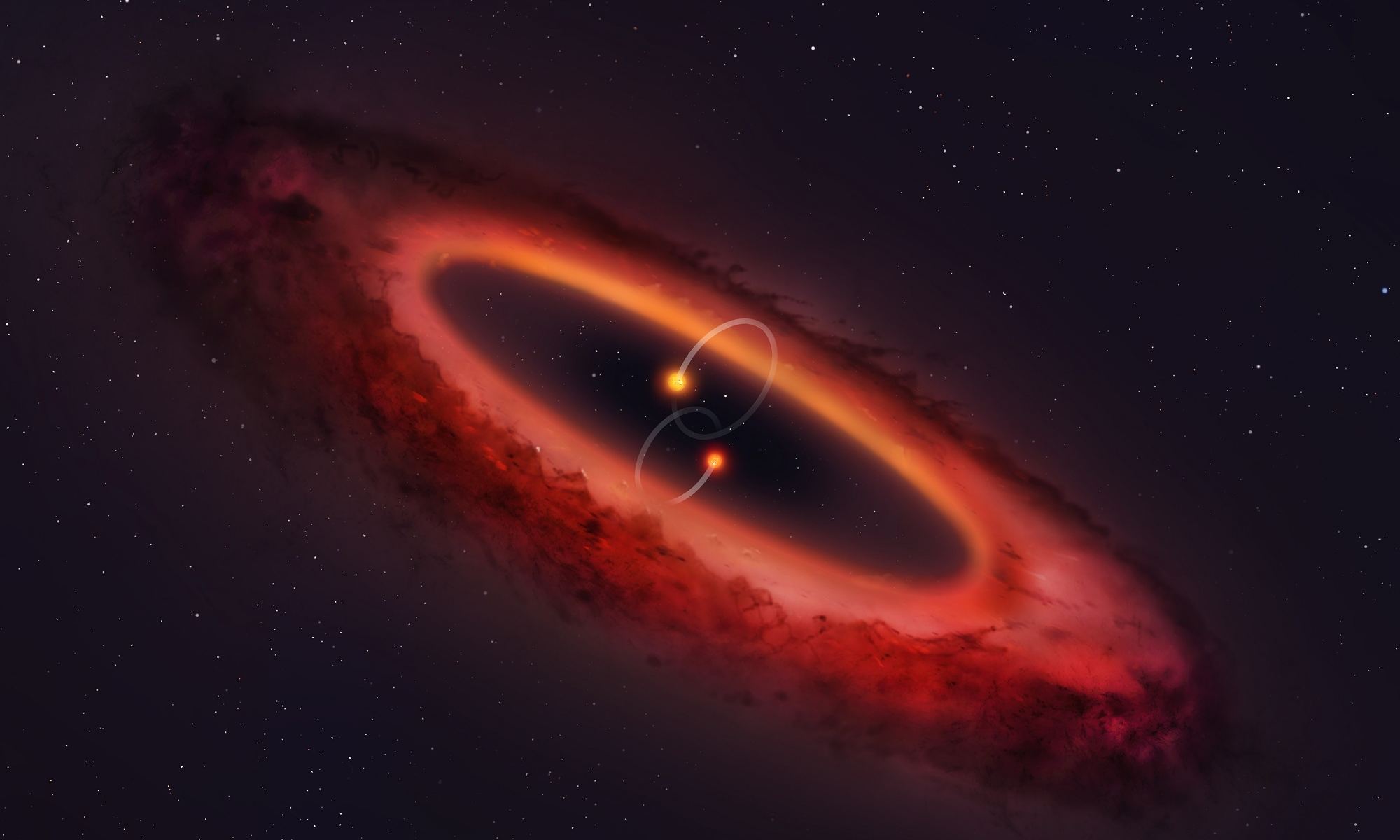
Star systems are some of the most captivating and awe-inspiring wonders in the universe. They are celestial neighborhoods consisting of a star and a collection of planets, moons, asteroids, and comets. These mesmerizing formations have fascinated astronomers and space enthusiasts for centuries.
In this article, we will delve into the extraordinary facts about star systems that will leave you astounded and hungry for more knowledge. From the mind-boggling number of star systems in our galaxy to the diversity of planets residing in them, we will uncover the remarkable discoveries and intriguing mysteries of these celestial entities.
So, fasten your seat belts and get ready for an exhilarating journey through the breathtaking wonders of star systems!
Key Takeaways:
- Stars come in all shapes and sizes, from tiny neutron stars to massive supergiants. The universe is like a cosmic dance floor filled with stars of different sizes and personalities.
- Star systems are not just about stars; they also include planets, dark matter, and mysterious objects like pulsars and black holes. The universe is a treasure trove of wonders waiting to be explored.
The Sun is a Star
Did you know that the Sun, the center of our solar system, is actually a star? It is a medium-sized yellow dwarf star, classified as a G-type main-sequence star. It plays a vital role in supporting life on Earth and is just one of the billions and billions of stars in the universe.
Stars Come in Different Sizes
Star systems are made up of stars, and these stars can vary greatly in size. From tiny neutron stars that are only a few kilometers in diameter to massive supergiants that are hundreds of times larger than our Sun, the universe is filled with an incredible range of star sizes.
Binary Star Systems
In a binary star system, two stars orbit around a common center of mass under their mutual gravitational attraction. There are countless binary star systems in the universe, where two stars dance together in a cosmic ballet.
Variable Stars
Some stars have the remarkable ability to change their brightness over time. These are called variable stars, and they exhibit different patterns of variability. One famous example is Betelgeuse, a red supergiant star in the constellation Orion, known for its irregular variations in brightness.
Stellar Nurseries
Star systems are born in vast clouds of gas and dust known as stellar nurseries. These nurseries, also called nebulae, are the birthplaces of stars, where gravity causes the gas and dust to come together, eventually forming new stars and planetary systems.
Multiple Star Systems
Not all star systems consist of just two stars. There are also multiple star systems, containing three or more stars that orbit their common center of mass. The interactions between multiple stars can be complex and fascinating.
White Dwarfs
When a star exhausts its nuclear fuel, it undergoes a process called stellar death. The outer layers of the star are expelled into space, leaving behind a dense core known as a white dwarf. These remnants can be incredibly hot and emit intense radiation.
Supermassive Black Holes
At the heart of many galaxies, including our own Milky Way, lies a supermassive black hole. These monstrous objects have masses millions or even billions of times greater than our Sun. They exert a tremendous gravitational pull and play a crucial role in shaping the galaxies they reside in.
Pulsars
Pulsars are highly magnetized, rotating neutron stars that emit beams of electromagnetic radiation. They were first discovered in 1967 and have since become key objects for studying extreme physical conditions and the nature of matter.
Star Clusters
Star systems can also exist in the form of clusters, where hundreds or thousands of stars are gravitationally bound to each other. These clusters can come in different types, such as open clusters and globular clusters, and provide valuable insights into stellar evolution.
Supernovae
When a massive star reaches the end of its life, it undergoes a cataclysmic explosion known as a supernova. This extraordinary event releases an immense amount of energy, outshining entire galaxies for a short period. Supernovae play a crucial role in the distribution of elements throughout the universe.
Stellar Evolution
Stars are not static but undergo a process of evolution throughout their lifetimes. They transform from protostars to main-sequence stars, and depending on their mass, they can evolve into red giants, white dwarfs, neutron stars, or even black holes. This remarkable journey shapes the destiny of stars.
Exoplanets
Planets are not limited to our own solar system. In recent years, the discovery of exoplanets, planets orbiting stars outside our solar system, has increased dramatically. These exoplanets hold the potential for hosting life and provide insights into the diversity and formation of planetary systems.
The Mystery of Dark Matter
Star systems are not only made up of stars and planets but also mysterious dark matter. Dark matter is a hypothetical form of matter that does not directly interact with light or other electromagnetic radiation. Its existence is inferred through its gravitational effects on visible matter, including stars.
These are just a fraction of the astonishing facts about star systems. The universe is a vast and wondrous place, filled with countless stars and mysteries waiting to be explored. From the birth and death of stars to the existence of exotic objects like pulsars and black holes, star systems continue to captivate our imagination and expand our understanding of the cosmos.
Conclusion
In conclusion, the vastness of the universe never ceases to amaze us, and the star systems within it hold countless extraordinary facts that continue to push the boundaries of our understanding. From the mind-boggling distances between stars to the mind-blowing variety of celestial bodies, star systems are a constant source of fascination for astronomers and space enthusiasts alike.
Whether it’s the discovery of exoplanets with the potential for life, the mesmerizing beauty of binary star systems, or the immense power unleashed by supernovae, there is no shortage of remarkable phenomena within star systems. The more we study and explore these cosmic wonders, the more we realize how interconnected and awe-inspiring the universe truly is.
So, next time you gaze up at the night sky, remember that each twinkling star is a part of a larger system brimming with extraordinary stories and secrets waiting to be uncovered. The universe is an endless source of wonder, inviting us to keep exploring and expanding our knowledge of what lies beyond.
FAQs
Q: How many star systems are there in the universe?
A: It is impossible to determine the exact number of star systems in the universe. Estimates suggest that there could be billions or even trillions of star systems scattered throughout the cosmos.
Q: Are all star systems similar?
A: No, star systems can vary greatly in terms of their composition, size, and characteristics. Some star systems may have multiple stars, while others may have only one. There are also variations in the types of planets and other celestial bodies present within each system.
Q: Are there star systems with more than one habitable planet?
A: While the discovery of habitable planets is still an area of active research, it is possible for star systems to have more than one habitable planet. Examples like the Trappist-1 system, which is known to have multiple Earth-sized planets in the habitable zone, highlight the potential for such systems to exist.
Q: Can star systems contain black holes?
A: Yes, star systems can contain black holes. These are formed when massive stars reach the end of their lifecycle and collapse under their own gravitational pull. Black holes have immense gravitational pull and can have a significant impact on the surrounding star system.
Q: Do all star systems have planets?
A: Not all star systems have planets, but recent observations and studies have shown that many star systems do indeed harbor planets. These exoplanets can range from rocky worlds similar to Earth to gas giants like Jupiter, and their presence adds to the diversity and complexity of star systems.
Star systems captivate imaginations, but moons orbiting exoplanets also hold fascinating secrets. Exomoons, natural satellites beyond our solar system, likely exist in abundance. Though yet to be confirmed, evidence suggests exomoons could potentially harbor life. Delving into the extraordinary facts about exomoons will expand your understanding of the universe's wonders. From formation theories to detection methods, exploring exomoons offers a thrilling journey of discovery. As we continue to study these distant worlds, who knows what incredible revelations await? Embark on an adventure through the cosmos and uncover the astounding facts about exomoons that will leave you in awe.
Was this page helpful?
Our commitment to delivering trustworthy and engaging content is at the heart of what we do. Each fact on our site is contributed by real users like you, bringing a wealth of diverse insights and information. To ensure the highest standards of accuracy and reliability, our dedicated editors meticulously review each submission. This process guarantees that the facts we share are not only fascinating but also credible. Trust in our commitment to quality and authenticity as you explore and learn with us.


